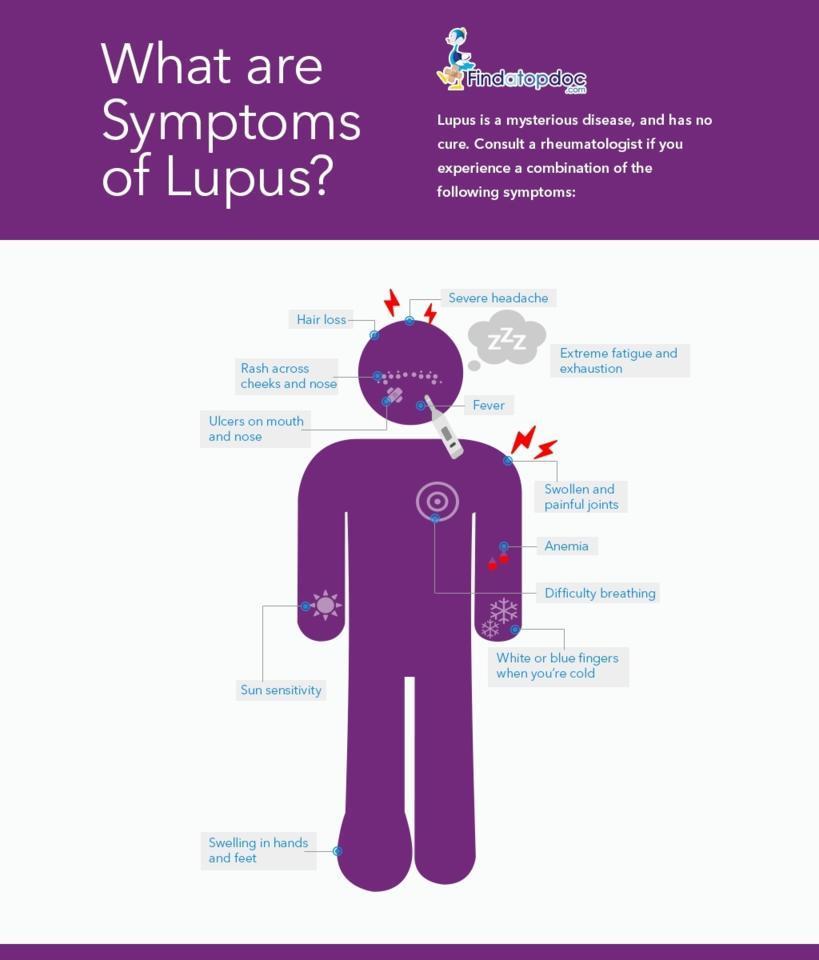
What are the symptoms of Lupus?
Lupus is an autoimmune disease that causes swelling (inflammation) and a wide variety of symptoms. Lupus affects each individual uniquely. Some people have only a few mild symptoms and others have many, more severe symptoms. Symptoms usually start in early adulthood, anywhere from the teen years to the 30s. As with some other autoimmune diseases, people with lupus generally experience flare-ups of symptoms, followed by periods of remission. That’s why early signs are easy to dismiss. Because early symptoms are similar to those of so many other conditions, having them doesn’t necessarily mean you have lupus. Here are the most important symptoms.
Fatigue
A whopping 90 percent of people with lupus experience some level of fatigue, according to the Johns Hopkins Lupus Center. An afternoon nap does the trick for some people, but sleeping too much during the day can lead to insomnia at night. It may be hard to do, but if you can remain active and stick to a daily routine, you may be able to keep your energy levels up. If you are living with debilitating fatigue, speak to your doctor. Some causes of fatigue can be successfully treated.
Unexplained Fever
One of the early signs of lupus is a low-grade fever for no apparent reason. Because it may hover somewhere between 98.5 and 101 degrees Fahrenheit, you won’t necessarily think to see a doctor. People with lupus may experience this type of fever in an on-again, off-again fashion. Low-grade fever could be a sign of inflammation, infection, or imminent flare-up. If you have recurrent, low-grade fevers, make an appointment to see your doctor.
Hair Loss
Thinning hair is often one of the first signs of lupus. Hair loss is the result of inflammation of the skin and scalp. Some people with lupus lose hair by the clump, but more often, hair thins out slowly. Some people also have thinning of the beard, eyebrows, eyelashes, and other body hair. Lupus can cause hair to feel brittle, break easily, and look a bit ragged, earning it the name “lupus hair.”
Skin Rash or Lesions
One of the most visible signs of lupus is the butterfly-shaped rash that appears over the bridge of the nose and both cheeks. About 50 percent of people with lupus have this rash, according to the Johns Hopkins Lupus Center. The rash can occur suddenly or appear after exposure to sunlight. Sometimes the rash appears just before a flare-up.
Pulmonary Issues
Inflammation of the pulmonary system is another possible marker of lupus. Not only can the lungs themselves become inflamed, but the swelling can also extend to lung blood vessels. Even the diaphragm may be affected. These can all lead to chest pain when you try to breathe in, a condition often referred to as pleuritic chest pain.
Kidney Inflammation
People with lupus can develop a kidney inflammation called nephritis. Inflammation makes it harder for the kidneys to filter toxins and waste from the blood. According to the Lupus Foundation of America, nephritis usually begins within five years of the start of lupus.
Symptoms of systemic lupus can vary widely from person to person. Some people may only experience a few mild symptoms, whereas others may be more severely affected. Notice them on time and stop the disease before it gets too serious.


